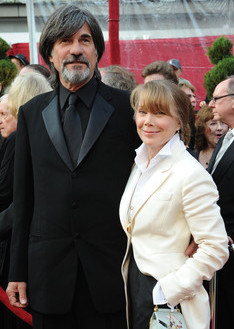 Jack Fisk at the Oscars for "There Will Be Blood" with his Best Actress wife Sissy SpacekThe Revenant, just nominated for eight (!) BAFTAs, opens nationwide today so here's our last interview of the week to celebrate this wilderness epic.
Jack Fisk at the Oscars for "There Will Be Blood" with his Best Actress wife Sissy SpacekThe Revenant, just nominated for eight (!) BAFTAs, opens nationwide today so here's our last interview of the week to celebrate this wilderness epic.
Jack Fisk, the Oscar-nominated Production Designer (There Will Be Blood) is no stranger to outdoor challenges. Many of his most famous films, due in no small part to his long collaboration with Terrence Malick, feel the spiritual pull of nature as does the man who designs them. He prefers to build on location and with the tools that would have been present at the time, whatever time the movie happens to take place in.
When he signed on for The Revenant, Alejandro Gonzalez Inarritu gave him a copy of Andrei Tarkovsky's Andrei Rublev which he used for inspiration of scale and detail. His longtime collaborators Emmanuel "Chivo" Lubezki (Cinematographer) and Jacqueline West (Costumes) Fisk -- who he had worked with on many projects though only once altogether (The New World, 2005) were also on hand to realize this brutal of frontiersman Hugh Glass (Leonardo DiCaprio) surviving bear attacks, bloody skirmishes, and mercenary Tom Hardy.
I asked Fisk about his onscreen life with auteur collaborators, his offscreen life with one of the great screen actresses, and his preference for outdoor cinema. Our conversation is after the jump...
NATHANIEL: Are you aware that you're basically the envy of cinephiles everywhere. You've been part of mythmaking origin stories of so many directors and an actress, too. It's like a parade of auteurs in your filmographies.
JACK FISK: (Laughs) I'm probably the luckiest designer around.
NATHANIEL: I have a decent understanding of Production Design as a job but when a film is largely outdoors, I'll admit that I feel less certain about what it is that you. You're responsible for the entire look of a film but how do you "design" something that's primarily outdoors?
JACK FISK: The first element and the biggest part of my contribution would be finding where to shoot it. Locations become a major design element in this type of film. All of the sets that are built are kind of secondary but they're also built on the location... so it's like you're finding your stage, you know?
Okay.
The primary goal of mine in designing The Revenant was to find locations that imitated the scale of the Northwest in the 1820s and indicated the scale of man in his environment and would also be able to illustrate the intersection between Europeans and indigenous people.
The Revenant fort set. Photo via Architectural Digest
You've worked with Emmanuel Lubeski, the Cinematographer, before.
I've worked with Chivo on six films. Most of the films we've worked on together have been shot primarily with natural light - no generators or electric lights brought in. But to do that we have to find locations that face west or southwest because we end up shooting in the last part of the day. We spend the first part of the day getting ready and getting to the location. If the location wasn't south or southwest, no matter how nice it was, we'd discard it and find something that gave him the light he needed and work with Hugh Glass's story.
I also get very involved with the props and the set decorators because those elements keep reminding you of the period you're in.
Sometimes when you're watching a movie -- particularly immersive ones like this -- you don't really think about it until you're outside the movie again. Then you're all "someone had to make that gurney that Hugh Glass is laying on!" And that very memorable boat they're running to. Do you rely on imagination or is it all heavily accurate.
You know everything is researched first. And then what I try to do is leave the research behind and work with common sense and build with materials that would have been available to people at that time. Knives, boats, everything. The New World (2005) was set about two hundred years earlier, and the ports were different. Bigger rivers and supplies would be coming in from England at a regular basis. In The Revenant they'd have to go to St Louis to get supplies and bring them back up.
And this is what you normally do?
On Days of Heaven (1978) and There Will Be Blood (2007) we didn't have any sound stages - they were all built outside. I'd much prefer to build a house or a fort in a real environment than try to simulate it on a soundstage. It's what I'm most comfortable with.
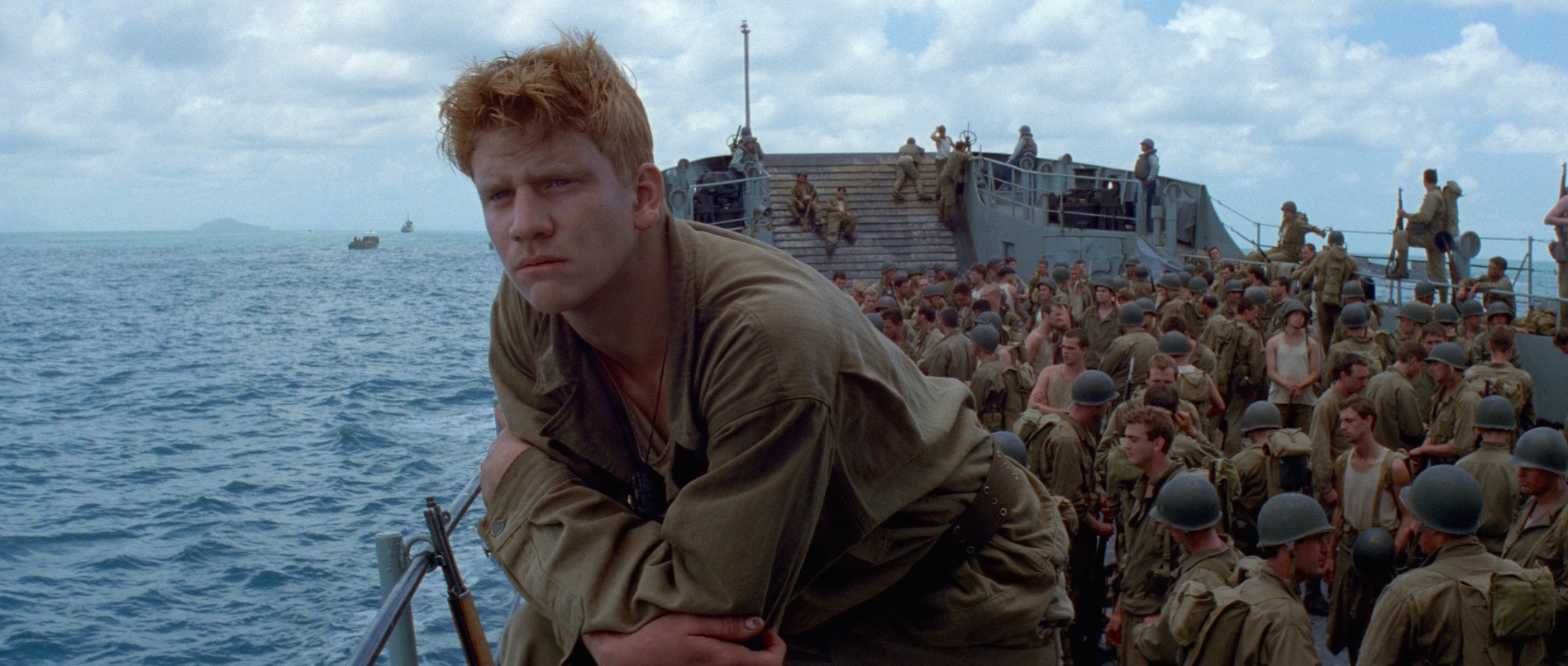 The Thin Red Line (1998)
The Thin Red Line (1998)
NATHANIEL R: Your films suggest that you're quite an outdoors man at heart!
JACK FISK: You know I try to be. I love nature. I live on a farm in Virginia. I was thinking today that this reminded me a little of when we shot The Thin Red Line (1998) in Australia. We built everything outside. There were dangers... not grizzly bears but saltwater crocs and poisonous snake. In Canada we had mountain lions and wolves and black bears and grizzly bears. It keeps you alive and makes you feel like a participant in it -- like you're one of the trappers; you're surviving the same way they would.
We created that scene of Glass being attacked by a bear but while we were there shooting a hunter was attacked and killed by a grizzly bear about 15 miles from where we were shooting. And then a hiker froze to death during one of the cold snaps. They found them frozen in an upright position.
Yikes.
It's a difficult working environment but it's easier to create the environment if you're actually in it. The story of Glass took place in South Dakota though we were shooting more up in the hills of the Rockies in Canada. There are a lot of similarities.
You've worked with Brian de Palma, P.T. Anderson, David Lynch, Terrence Malick. For sophisticated moviegoers these are mythic names. Do you find any similarities between them or are their sets wildly different?
They're different but not wildly different. Each one of them is an artist and passionate. It's not like a job. Terrence Malick doesn't make a movie for the money. He does it because he's passionate. I felt the same about Alejandro when I first met him. He never disappointed me. All these people you mentioned -- when they make decisions about what they want to do or shoot or cast... it always makes sense somehow.
You don't think 'Why are they doing that?! Why don't they try harder?' These guys I'm always running to keep up with. I think they feel that. I never say no. I just say 'I'll do it.' because I'm just as anxious as they are to see what they're going to end up with.
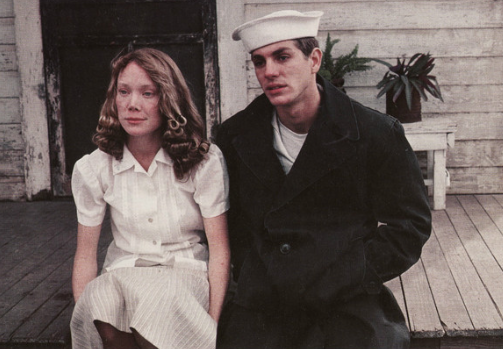 Sissy Spacek and Eric Roberts in Raggedy Man (1981)
Sissy Spacek and Eric Roberts in Raggedy Man (1981)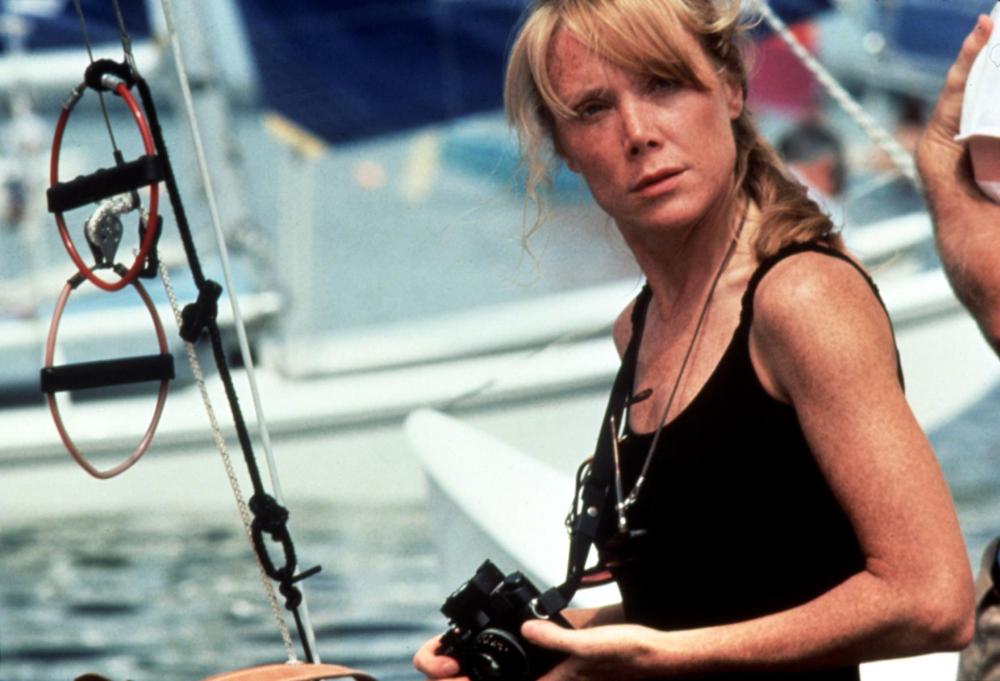 Sissy Spacek in Violets are Blue (1986)
Sissy Spacek in Violets are Blue (1986)
NATHANIEL R: You directed for awhile in the 80s and 90s.
JACK FISK: I did. You know Terrence Malick went on a self-imposed hiatus for about 20 years...
[Laughter]
...and I got into directing in that time. But sort of in my mind I thought 'You'd be a better production designer than director.' I just -- I didn't like dealing with studios and the complexity of raising money. But I loved building environments and creating worlds that you could step into.
One night during Water for Elephants I was sitting in a circus tent we built and there were clowns and perfomers and animals and nothing in there told me it was 2011. For a moment you just step back in time. Sometimes I find myself aching to experience what it was like to be in these periods.
When I was young in art school I would spend my summers up in Vermont and I lived in a house up there that had no electricity and water from a spring and I just loved it. One summer I had neighbors that had a horse-drown plough and I went over and ploughed up a little garden. I felt like i was back in another time. It was so curious to me that you can appreciate both that time and the time you're in and put those together. There's a certain comfort in that.
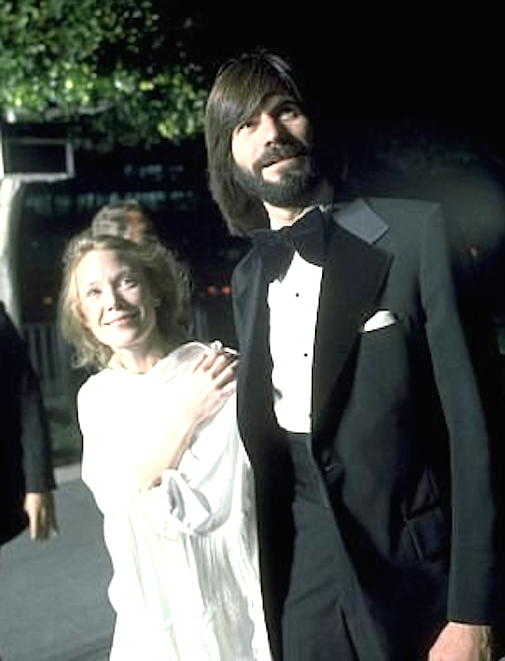 Sissy's first time as a nominee for CARRIE. She and Jack Fisk had been married for 3 years already.
Sissy's first time as a nominee for CARRIE. She and Jack Fisk had been married for 3 years already.
You're married to a famous great actress. And two of the earliest films you and Sissy made together Badlands (1973) which you met on and Carrie (1976). Well, they're so famous *now* so I wonder what it's like to be reminded so often now of this past that was surely very personal for you. The films have become so iconic.
We just think of it as a part of our life together. You know inbetween Badlands and Carrie I did Phantom of the Paradise (1974) with Brian and Sissy came in and worked as a set dresser. I was short on crew - it was non-union films in those days. She came in and sewed up sheets and did stuff for me like that. We were shooting in Texas and she got all her relatives to come in and help me build dummies for the scene in the majestic theater. We just -- it's sort of an artistic life the things we do. We had children and they came to set and were in many of the films we did. Our daughter started a film in Ireland and we just went over and supported her and watched her work as a circus performer.
[Pause] It's just seems like normal life.
It's exotic to movie fans but normal to you!
You know we tell ourselves often how lucky we are and how much we've enjoyed our life. We don't live in Hollywood but we both enjoy the creativity of making films. She's doing a TV show now...
Bloodline.
It's a different kind of experience for her but after 45 years in the business we're fortunate we're still working and having fun.
Well, all the best moving forward. I hope there are many more opportunities to come.
I'm always looking for artists to work with because it's the most fun creative process to put together a film. You know, I notice now as film develops there are more artists in the business, more people who love film; it's not just a job but a passion or way of life.
That's comforting to hear for those of who live for movies.
There are so many good films now. They're raising such a high bar for us all.

The Revenant | Production Design | interviews | Sissy Spacek
